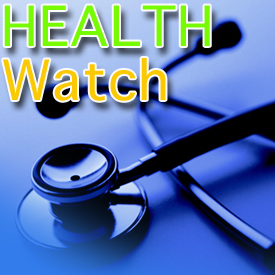

 Coronavirus: Am I at risk?
Coronavirus: Am I at risk?From blackdoctor.org
By now, everyone who doesn’t live in a cave has heard about the new coronavirus epidemic, with increasing numbers of infections and also increasing numbers of deaths. While there is a need to be concerned, most people infected recover from the infections and some folk are even free of any symptoms.
So what are coronaviruses, how dangerous are they, who is at risk and how do we protect ourselves? Unfortunately, what we don’t know is far greater than what we do. Let’s first talk about coronaviruses. This family of viruses is quite common and most of us have had a coronavirus infection.
In humans and animals, it can infect the upper respiratory tract, but usually does not produce serious disease. Along with rhinoviruses, the coronaviruses can cause the common cold. So typically, a person has a runny nose, sneezing or a cough, sometimes a fever that clears up after a few days. There is no vaccine yet and no approved drugs in the U.S. Infections are usually less severe than a case of the flu caused by influenza virus.
But, viruses like coronavirus and influenza can mutate or change, which can make it more dangerous. Also, coronaviruses that infect animals may be able to cross over and infect humans. One of the problems of this new dangerous strain of coronavirus (called SARS-CoV-2 which produces disease COVID-19) is that the infection produces the same symptoms of other common infections like the cold or the flu.
The main symptoms would be a fever, along with a cough or shortness of breath. If you have these symptoms, contact your doctor or go to an emergency room so you can be tested. The coronavirus can be detected in nasal secretions, sputum and other secretions from the upper respiratory tract. Most likely, though, it is not a SARS-CoV-2 infection.
So how deadly is this virus? Sorry to say, we don’t really know. The data we have from mid-February indicates a mortality rate of about 2.3 percent, and that is expected to go down as cases increase. Of the cases in the U.S., at the time of this writing only six had died in U.S., all in the state of Washington. But we’ve been down this path before with other coronaviruses. In 2001, we experienced an epidemic by a coronavirus that caused a syndrome called SARS, Severe Acute Respiratory Syndrome. SARS had a much higher mortality rate of almost 10 percent! SARS like SARS-CoV-2, also originated in China and then quickly spread. Then, years later, in 2012, another coronavirus popped up in Saudi Arabia and caused a disease called MERS, Middle Eastern Respiratory Syndrome. The mortality rate from that’s infection was a whopping 35 percent! So far SARS-CoV-2 doesn’t approach either of these.
But let’s take a broader look. In the U.S., every year 30,000 to 40,000 people die from the flu, an infection that we have a vaccine for. People just don’t get vaccinated. The worse epidemic we experienced in modern times was the Spanish Flu epidemic in 1918 when nearly 100 million people are estimated to have died worldwide from the infection.
Like other coronaviruses, SARS-CoV2 is spread as droplets in the air when infected people sneeze and cough. It may also be spread when people make contact with contaminated surfaces. It is believed the virus can last on surfaces for as long as nine days. While it’s good that the vast majority of infected people will recover, we are still not sure what are the strongest risk factors for death.
In general, however, these infections have higher mortality in the very young, the elderly and people with chronic diseases, particularly lung diseases like asthma or COPD or diseases that weaken the immune system. One medical report reviewed suggests that people with heart disease are at increased risk of mortality from the infection. While we do not have specific data on HIV infection increasing risk for SARS-CoV-2, HIV is a chronic disease affecting the immune system that can increase the risk for acquiring many infections and also increase risk of bad outcomes (e.g. death) from these infections.
